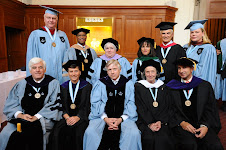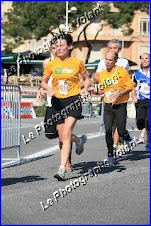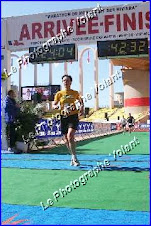As promised, out of chronological order, but herewith an essay inspired by my trip to Paris in April.
When I was at Barnard, everyone I knew took the survey course for Art History (or its corollary, Art in Humanities, or ArtHum, at Columbia). The Barnard Art History department was pretty good (and still is, I believe), which was no surprise, given the college’s location in New York City, with its plethora of museums, art galleries and auction houses. Instead, I took Ear Training III with Richard Taruskin, because I wanted to minor in music, and frankly, it turned out to be one of my more challenging classes, for a person who thought of themselves as a pretty accomplished musician.
My art history education has taken place outside of the classroom. It began when I was living in Riverside, CT, when I went on school field trips to the Metropolitan Museum of Art in the City or the Mead Museum in Greenwich. Later, when I was living in NYC after college, my mom and I spent a lovely afternoon one spring at a Monet exhibit at the Met, and it became a fond memory for us both. On our family trips, typically we did not visit museums, although my father had a keen interest in art, and had an inclination to be an art major in college (thought he ended majoring in English). When we took our first European trip as a family, we spent more time in large outdoor exhibits (Legoland and Tivoli Park in Denmark, the Castle in Heidelberg, the Nordic Villages in Sweden) than we did in museums, presumably with the short attention span of three youngsters under 12 in mind.
On our second European vacation in 1977, my sister, brother and I were teens, and were prepped in a much more sophisticated way for the month long camping trip. We were each assigned a country for which we were responsible (Eric – England, Chris – Germany, Ari – France), and asked to provide an itinerary of what to do in that country. So in England at Eric’s suggestion, we visited Shakespeare’s home and the Anne Hathaway house in Stratford-upon-Avon, Stonehenge, and the Windsor Castle in London; in France, I had us head to Mont-St-Michel in Normandy and the menhirs at Carnac in Brittany. In Paris, I don’t remember having picked anything special for us to do, other than see the Eiffel Tower (which I don’t remember us going up at the time), but my Mom and/or Dad picked the Rodin Museum as something they wanted to see. So we drove through Paris to find the museum, and Dad even found a place to park on the street. Everyone got out to head into the museum, except me – it had been a somewhat difficult trip for me as a 15-year-old in the close quarters with my family in our VW bus, and I decided at that moment that I needed some personal time. So I gave up the chance to see Rodin’s bronzes, and sat in our VW camper bus and read for the hour or so that the rest of the family took to see the museum that afternoon. And I regretted not a moment of that hour alone, ever.
And when I returned to Paris as a college student on a three week swing through England, France and Germany (again!), I didn’t even think to visit the Rodin Museum. I was in the midst of my thesis exploration and my studies in medieval European History – I visited the British Museum in London, the famous Castle in Edinburgh, the Popes’ Residence in Avignon, and the Musée de Moyen Age (Musée de Cluny) in Paris. I was pretty focused at the time on my itinerary. I ended up writing my thesis on the Middle Ages, using a biography of a French Count in the 14th century as a starting point for observations about life, religion, and culture during that time.
Over the course of my adult life following college, I made many trips back to Europe, most frequently with musical/choral tours with the New Amsterdam Singers, during which visits to museums and cultural centers were standard fare on the planned itineraries. But on those trips, experiencing the cultural life directly, through our collaborative concerts or post-concert eating and drinking fests, was often my most vibrant take-away from the countries I visited. In Wales, it was the experience of staying overnight with on a Welsh farm that was as interesting as was the competition at the choral festival we were attending. In Turkey, it was the experience of hearing the frequent calls to prayer at the mosques in our neighborhood in Istanbul that deepened my understanding of Islam as much as it was seeing the Hagia Sophia. In the Basque country, it was singing Christmas carols in English and Spanish along with our chorus hosts at our midnight post-concert dinner that stayed with me as much as it was seeing the striking Frank Gehry Museum in Balboa for the first time.
And as one who lived in Washington, DC or its suburbs for over 20 years, my tendency was to bring my guests to the outdoor memorials – the Vietnam Wall, the Roosevelt fountains, the Jefferson, or the steps of the Lincoln – more than it ever was to walk through the excellent museums along the Mall.
But back to Rodin.
Well, not quite yet. A quick recounting of my first two trips to Paris. My first trip in September had been a whirlwind affair, mostly using the city as a jumping off point to visit Brugges, Belgium with my friend, Joanne. My schedule on that trip had given me barely time to wander up and down the Seine to see the Notre Dame before heading to the Gare de Lyons to catch my TGV back to Nice.
My second trip had been slightly spontaneous, prompted by an invitation to a Thursday night Barnard Club of Paris event in early December. It was also a short visit, due to my need to be back on Sunday morning to sing with my church choir. During that December visit I had made a pilgrimage to the Eiffel Tower – and spent nearly three hours at the icon, walking its stairs, standing on its observation decks (three of them), enjoying an espresso mid-tower and taking countless photos of the city. The second day of that visit was to see the Louvre – I figured if I was going to be in Paris, I couldn’t tell folks I hadn’t been to the most famous art museum in the City. So I spent the better part of an afternoon looking at art – not knowing exactly what I was looking at, but enjoying it anyway. The third day was a visit with my hosts Jean-Yves and Olivier to the Musée Jacquemart-André on boulevard Haussman. It was a fabulous mansion with incredible art collected by its itinerant owners from all over the world. Luckily this time we used audio-guides, so I had an idea of what art I was looking at. It was impressive.
After that short December visit, Olivier and Jean-Yves invited me back to spend another weekend, and we finally found time on our mutual calendars (they do as much travelling as I do!) in April. This time I gave myself a few days to explore the City of Light. But honestly, a week before I was to leave for Paris, I had no real idea of what I was going to do once I was there. It was over brunch with a Texan, that I met at my French church, one morning in April that I was given a few ideas.
My new Texan friend was a Francophile (he was taking a four-week language course in Villefranche-sur-Mer at the time), and had spent two weeks in Paris every year for I don’t know how long. When asked for his favorite places in the city, he was very quick with his suggestions: L’Orangerie, Musée Rodin, Musée d’Orsay and the Louvre. I hadn’t thought about the Rodin Museum for a very long time. But once he mentioned it, I decided that is one of the places I would visit on my trip.
So, that first day in Paris saw me walking from the Boulevard St.-Germain metro stop to the rue de Varenne to the Musée Rodin. After thirty-one years, it was time to see the bronzes. And they were wonderful. The garden, around which the statues were artistically placed, was blooming with lilacs and wisteria – it was a perfect April day in Paris – sunny, and very warm in the sun, but still a little chilly in the shade. I marveled at Rodin’s ability to capture the beauty of the human body – and of his characters (the Burghers of Calais, Victor Hugo, and Bastien Lepage) – and walked around the entire garden before I finally came upon his most famous bronze, “The Thinker.” It was placed high on a stand, but it didn’t seem far away – in fact, the way the figure is posed, pondering, with his head on his chin, it felt like you were interfering with a private moment. As I told a friend later, I’m glad I saved the moment to enjoy this art, even if it was a long time getting there.
I stayed in the garden for some period of time, enjoying the sun, before going into the Hȏtel Biron, where other works of Rodin’s are housed. It is inside this lovely (but completely needing a renovation) mansion that the statue “the Kiss” can be seen – a lovely alabaster sculpture that truly captures the passion of a romantic embrace – and was considered a bit too much when it was first shown to the public.
It was hard to follow that with another exhibition, so I didn’t. I walked up the boulevard des Invalides and sat on the Esplanade des Invalides with other Parisians and tourists enjoying the sunny afternoon.
The rest of my stay included visits to the Centre Georges Pompidou, to see the Kadinsky exhibit, a true retrospective of the artist’s works throughout his career, and the Calder exhibit, a show featuring not his iconic mobiles, but his works using iron wire – starting with what apparently is his best known work “The Circus.” I don’t think I had ever seen this art of his, and I was absolutely fascinated. He used the wire to create faces and bodies of all types, including John D. Rockefeller and Groucho Marx. Wandering through the Kadinsky exhibit, I had to admit that I liked some of his periods more than others, and basically thought, this man has a pretty twisted mind – the colors and shapes on his paintings at times just seem to portray moments of torment – but also moments of joy. I decided, in my own study of art, that I like the modern movement – it allows one to use one’s imagination as you look at it – rather than traditional art, which puts something in front of you to examine and understand.
The Georges Pompidou also had more permanent collections of modern art, which allowed me to see once again some art with which I was familiar (Mondrian, Picasso, Matisse), and to see some new works as well.
My art history lesson was done for this visit, but not my viewing of art. I finished that afternoon at the Musée de L’Orangerie – a lovely museum on the grounds of the Tuilerie Gardens. In it I saw Monet’s Les Nymphéas, two rooms, each with four vast murals lining the walls of scenes that evoke “Waterlilies.” It was easy to just sit in those rooms and stare at his colors; very calming and introspective art. And the next day, I made my way back to the Musée de Moyen Age, to see once again the “Unicorn Tapestry” (five tapestries, actually) that I had seen in my earlier travels to Paris some twenty-six years ago. Yet another room where I took time to sit and ponder the time taken to weave these amazing tapestries and wonder about the inspiration for these pictures.
Art is personal, and on this visit I found art that truly inspired me.
And for that, you don’t need an art history class.
Sunday, May 17, 2009
Subscribe to:
Post Comments (Atom)





















































































































































































No comments:
Post a Comment